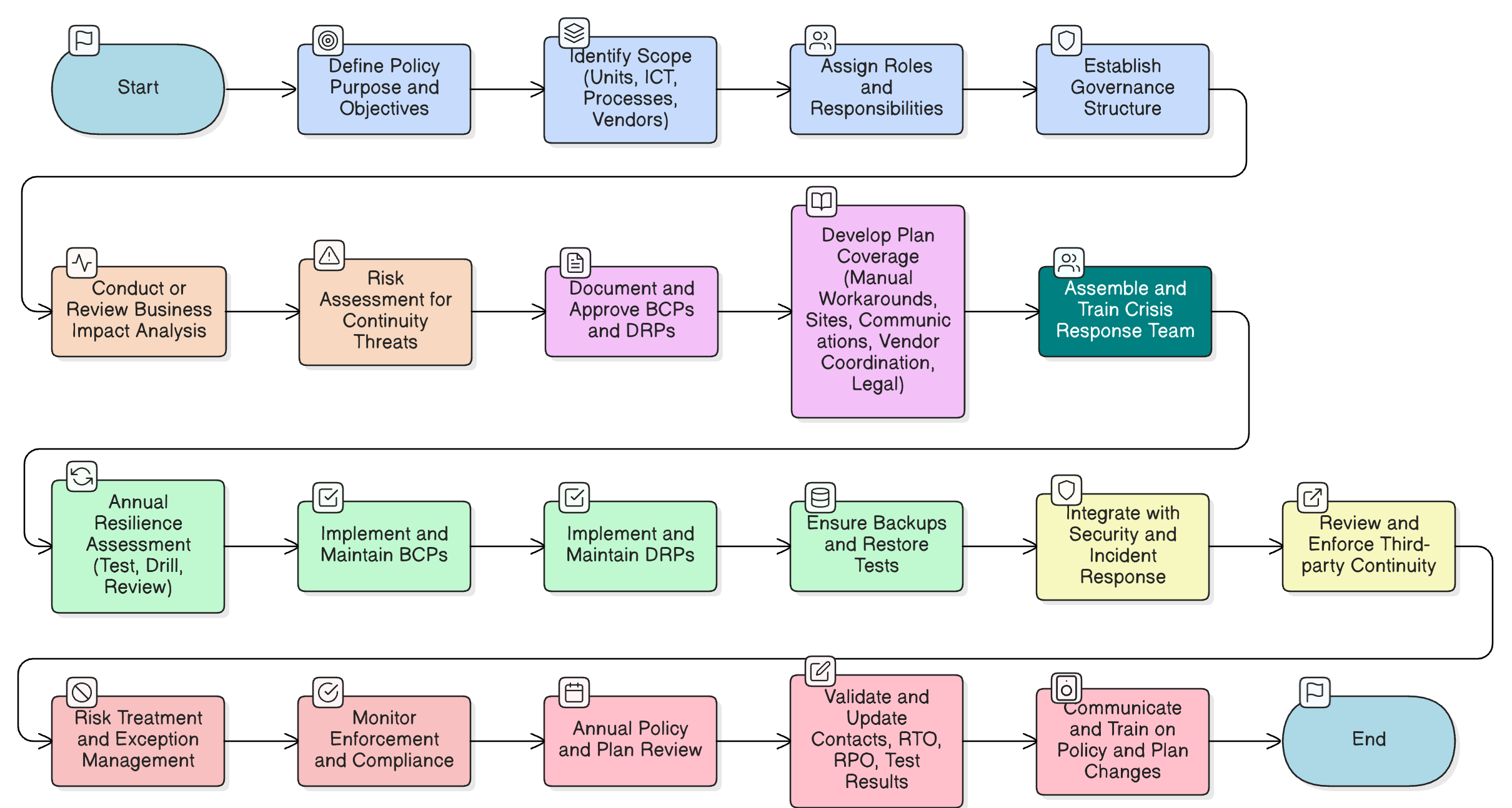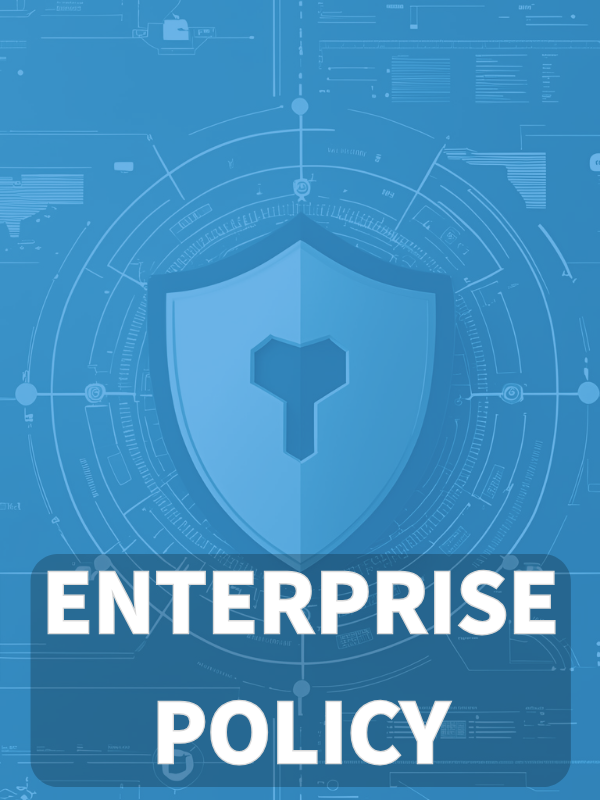Overview
This Business Continuity and Disaster Recovery Policy ensures critical operations continue and recover rapidly following disruptions, through proactive planning, testing, clear roles, and alignment with major standards and regulations.
Operational Resilience
Ensures continuous business operations during crises with tested recovery and continuity plans.
Regulatory Compliance
Aligned with ISO, NIST, GDPR, DORA, and NIS2 to meet international standards and legal obligations.
Clear Roles & Governance
Defines responsibilities from executive leaders to IT and crisis teams for coordinated response.
Regular Testing & Improvement
Mandates annual resilience assessments, plan updates, and drills to strengthen readiness.
Read Full Overview
Policy Diagram

Click diagram to view full size
What's Inside
Scope and Rules of Engagement
Business Impact Analysis & Risk Assessment
Continuity and Recovery Plan Requirements
Crisis Communication and Escalation
Testing and Audit Procedures
Third-Party and Vendor Continuity
Framework Compliance
🛡️ Supported Standards & Frameworks
This product is aligned with the following compliance frameworks, with detailed clause and control mappings.
| Framework | Covered Clauses / Controls |
|---|---|
| ISO/IEC 27001:2022 | |
| ISO/IEC 27002:2022 | |
| NIST SP 800-53 Rev.5 | |
| NIST SP 800-34 Rev.1 |
Contingency Planning
|
| ISO 22301:2019 |
Business Continuity Management System Requirements
|
| EU GDPR |
Article 32
|
| EU NIS2 | |
| EU DORA | |
| COBIT 2019 |
Related Policies
Audit And Compliance Monitoring Policy
Validates the integrity and effectiveness of continuity and recovery practices across systems and processes.
Information Security Policy
Establishes the requirement for risk-based, resilient operations under all conditions.
Change Management Policy
Ensures that any recovery-related configuration or infrastructure changes follow documented and approved workflows.
Data Retention And Disposal Policy
Governs the lifecycle of backup media and recovered data used in continuity operations.
Backup And Restore Policy
Enforces controls on backup frequency, security, and restoration verification.
Cryptographic Controls Policy
Ensures that recovery processes uphold encryption and confidentiality standards.
Logging And Monitoring Policy
Supports the detection and escalation of continuity-impacting events.
Incident Response Policy
Defines containment, escalation, and root cause processes aligned with continuity triggers.
About Clarysec Policies - Business Continuity and Disaster Recovery Policy
Effective security governance requires more than just words; it demands clarity, accountability, and a structure that scales with your organization. Generic templates often fail, creating ambiguity with long paragraphs and undefined roles. This policy is engineered to be the operational backbone of your security program. We assign responsibilities to the specific roles found in a modern enterprise, including the CISO, IT Security, and relevant committees, ensuring clear accountability. Every requirement is a uniquely numbered clause (e.g., 5.1.1, 5.1.2). This atomic structure makes the policy easy to implement, audit against specific controls, and safely customize without affecting document integrity, transforming it from a static document into a dynamic, actionable framework.
Actionable Recovery Plans
Step-by-step BCPs and DRPs mapped to actual business risks, dependencies, and system tiers for targeted response.
Robust Exception Workflow
Formal exception process with compensating controls and risk review for documented, safe deviations.
Integrated Security Alignment
Ensures continuity efforts do not compromise security or violate containment controls during emergencies.
Frequently Asked Questions
Built for Leaders, By Leaders
This policy was authored by a security leader with 25+ years of experience deploying and auditing ISMS frameworks for global enterprises. It's designed not just to be a document, but a defensible framework that stands up to auditor scrutiny.
